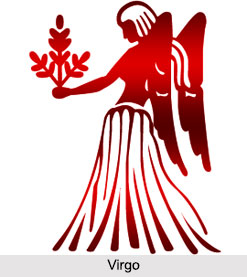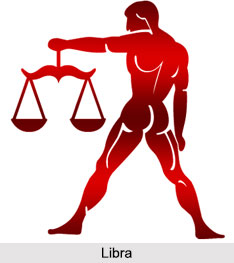 Siddhanta Jyotisa introduced the concept of seven planets which occupied a significant position in the new astronomy which were hardly known in the times of Vedanga Jyotisa. The planets which have been called as Grahas in the Hindu scriptures included the Sun and the Moon and five more planets which introduced the concept of Solar Zodiac. The Siddhant Jyotisa introduced the solar system and a calendar based on the movement of Sun and the planets which rotate around the sun. This led to the compilation of a solar calendar with solar months and Sankranti which was unknown in the past. The solar zodiac has been divided into twelve equal parts each distinguished by a different sign from the names of the solar months are derived.
Siddhanta Jyotisa introduced the concept of seven planets which occupied a significant position in the new astronomy which were hardly known in the times of Vedanga Jyotisa. The planets which have been called as Grahas in the Hindu scriptures included the Sun and the Moon and five more planets which introduced the concept of Solar Zodiac. The Siddhant Jyotisa introduced the solar system and a calendar based on the movement of Sun and the planets which rotate around the sun. This led to the compilation of a solar calendar with solar months and Sankranti which was unknown in the past. The solar zodiac has been divided into twelve equal parts each distinguished by a different sign from the names of the solar months are derived.
In the realm of religion too the study of astronomy introduced the worship of nine planets known as worship of Navgraha. The latter for the first time introduced the measurement of day and night and the concept of a week in Hindu calendar which has been vaguely mentioned in Yajurveda. Thus, the Siddhanta Jyotisa is mainly based on the Solar system.
Siddhanta Jyotisa introduces 12 new months based on solar eclipse and 12 months based on lunar calendar. The solar months which are mentioned in the Siddhanta Vedangas include Mesa, Vrisha, Mithuna, Karka, Simha, Kanya, Tula, Vrishika, Dhanus, Makara, Kumbha and Meen. Alongwith these, there existed 12 lunar months as well which derive their names from the Nakshatras. This includes Chaitra (from the naksatra Chitra), Vaisakha, Jyeshta, Ashahra, Sravana, Bhadra, Asvina, Kartika, Margashirsha, Pausa, Magha and Phalguna. Siddhant Jyotisa also introduces the concept of Sankranti when the sun travels from one zodiac to another; it also includes division of Lunar month on the basis of full moon or new moon which is known as Purnima and Amavasya.
Siddhantya Jyotisa discussed about the concepts of week and days within the week. The days mainly derive the names from the planet which names it as Ravivadra (Ravivar or the day of the sun), Somavdra (the day of moon or Soma), Mangalavadra (the day of Mars or Mangal), Budhvadra (the day of mercury or Budh), Brihaspathi (the day of Brihaspathy or Jupiter), Sukravadra (the day of Sukra or Venus), Sanivadra (the day of Saturn). As such the days now consisted of 24 hours which would include 12 hrs days and 12hrs of night. This changed the division of the muhurta concept of the Vedanga Jyotisa. It also brought changes in calculating the year which now began with the month of Chaitra which was based on the lunar calendar and included 365.24 days with 12 months.
Siddhanta Jyotisa had a lot of significance in the history of ancient India which marked the era which were marked with a number of dynasties and their rule. The Siddhanta Jyotisa was significant as it recognised 17 new eras in the ancient India. Siddhanta Jyotisa has been named as the Mahayuga; while the Vedanga Jyotisa acknowledged five yugas the Siddhanta Jyotisa acknowledged more than five yugas each with its distinctive category.
Thus, Siddhanta Jyotisa is the second period of Indian Astronomy which brought all the changes which is visible in Indian Astronomy.



















